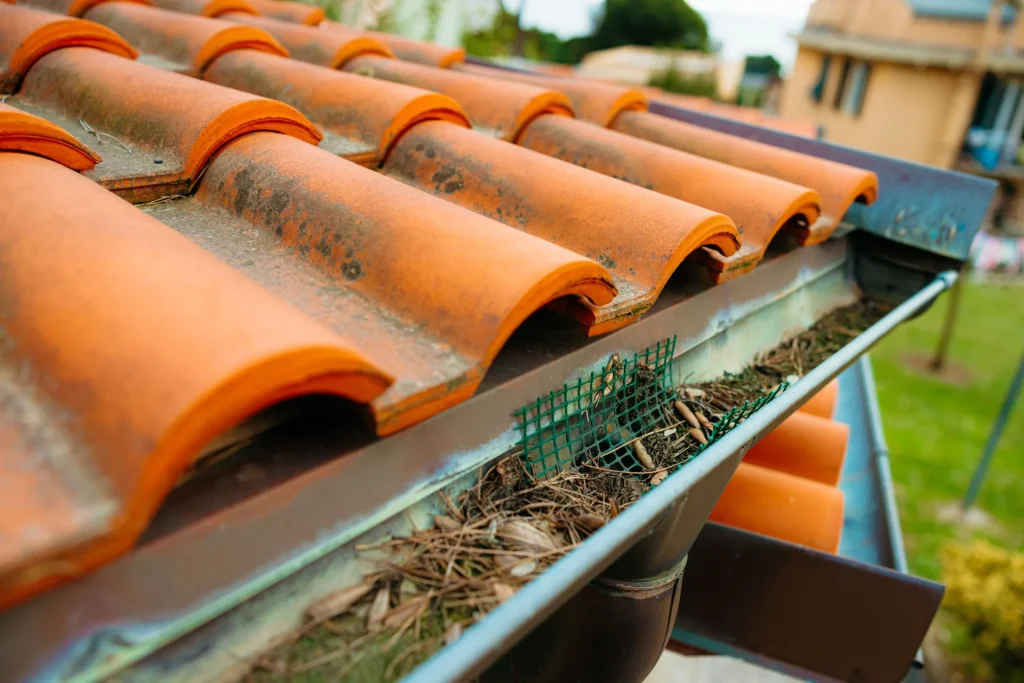Most homeowners don’t think much about their drainage until it stops working. Out of sight, out of mind, right? But when a heavy rain hits and water starts pooling where it shouldn’t, suddenly that quiet system becomes a big deal. A good roof drainage setup keeps your home safe, dry, and stable. But like anything else, it wears down with time.
If you’ve been wondering whether your setup’s still doing its job, here are four signs your residential roof drainage system needs an upgrade. And yes, sometimes it’s not just about cleaning the gutters—it’s about real roof drainage system repair before bigger issues hit.

1. Water Pooling Around the Foundation
Let’s start with the obvious one. After a storm, take a walk around your house. If you notice puddles collecting near the foundation, that’s your drainage waving a red flag.
When water lingers by your foundation, it seeps down into the soil. Over time, that soil expands and contracts, which puts pressure on your foundation walls. That’s how you get cracks, leaks, and basement water problems.
A solid roof drainage system should carry water away—far from your house. If it’s not, something’s off. Maybe your gutters are clogged. Maybe your downspouts don’t extend far enough. Or maybe the system’s just outdated and needs an upgrade.
If this is happening at your place, check out professional drainage solutions before the problem gets worse.
2. Overflowing Gutters
We’ve all seen it—the rain coming down so fast it’s spilling right over the gutter like a waterfall. And no, that’s not just “normal heavy rain.” That’s a sign your system isn’t keeping up.
Overflow usually means one of three things:
- Clogs. Leaves, sticks, and gunk are blocking water flow.
- Improper slope. If gutters aren’t angled right, water won’t move where it should.
- Undersized system. Your gutters just can’t handle the volume of water your roof collects.
Sure, a good cleaning can solve clogs. But if overflow keeps happening—even after cleaning—then your roof drainage system is undersized or failing. That’s when you’re looking at a bigger roof drainage system repair or replacement.
3. Water Stains on Walls or Ceilings
This one sneaks up on people. You notice a little brownish stain on the ceiling or streaks running down an interior wall. At first, you might shrug it off—maybe it’s just an old leak or condensation. But most of the time, those stains are water finding its way inside.
Here’s the thing: roof leaks aren’t always caused by shingles or flashing. Sometimes it’s the drainage system failing, sending water where it shouldn’t go. When water backs up, it can seep under shingles, behind siding, or through tiny cracks.
By the time stains show up, the damage has already started. Ignoring it can lead to mold, wood rot, or even structural issues. That’s why addressing your drainage system right away is key.
4. Sagging or Damaged Gutters
Finally, the easiest sign to spot: sagging gutters.
If your gutters are pulling away from the roofline, bending, or showing rust holes, they’re not doing their job. Sagging usually means they’re carrying too much weight—either from water that isn’t draining or from debris. Over time, that constant strain causes them to detach.
And once they start pulling away, water just runs behind them, straight down your siding and foundation. Not good.
At that point, patching won’t cut it. You’re better off calling in a pro to talk about upgrading the whole system.
Why Upgrading Sooner Is Better
Here’s the honest truth: drainage problems never fix themselves. They only get worse. And the longer you wait, the more expensive the repair becomes.
Think of it like this:
- Clogged gutters → overflowing water → soil erosion.
- Overflow → water near foundation → foundation cracks.
- Foundation cracks → basement leaks → mold and costly foundation repair.
See the chain reaction? That’s why an early upgrade saves you a lot in the long run.
Roof Drainage System Repair vs Replacement
So, do you repair what you’ve got or start fresh?
- Repair makes sense if your system is fairly new and just needs adjustments, cleaning, or minor fixes.
- Replacement/Upgrade is smarter if your gutters are old, undersized, or damaged beyond patchwork.
If you’re not sure, it’s worth getting a professional inspection. Companies that specialize in drainage system repair can tell you exactly what you’re dealing with.
DIY vs Professional Help
Can you climb up there with a ladder and clean out the gutters? Absolutely. Should you try to re-slope or replace them yourself? Eh, maybe not.
DIY works for maintenance—like cleaning and adding gutter guards. But once you’re talking about system design, slope, and tying into underground drainage, it’s time for the pros. The last thing you want is to miscalculate slope and have water pooling worse than before.
Wrapping It Up
Your roof drainage system might not be the most exciting part of your home, but it’s one of the most important. It’s the unsung hero keeping water away from your foundation and siding.
If you’ve spotted any of these warning signs—pooling water, overflowing gutters, stains, or sagging—it’s time to think seriously about an upgrade. Small issues can turn into major headaches if ignored.
Don’t wait until water damage forces your hand. Look into roof drainage system repair now, before the next storm rolls in. And if you need expert help, check out drainage services here.
FAQ
At least twice a year—spring and fall are best. After big storms, do a quick check too.
Yes. Overflowing water can pool around the base of your house, leading to cracks and leaks.
Most last 20–30 years with regular care, but climate and maintenance make a big difference.
It depends on the extent of the damage. Minor fixes are affordable, but full upgrades cost more.
Gutter guards help cut down on debris buildup, but they don’t eliminate the need for cleaning.
